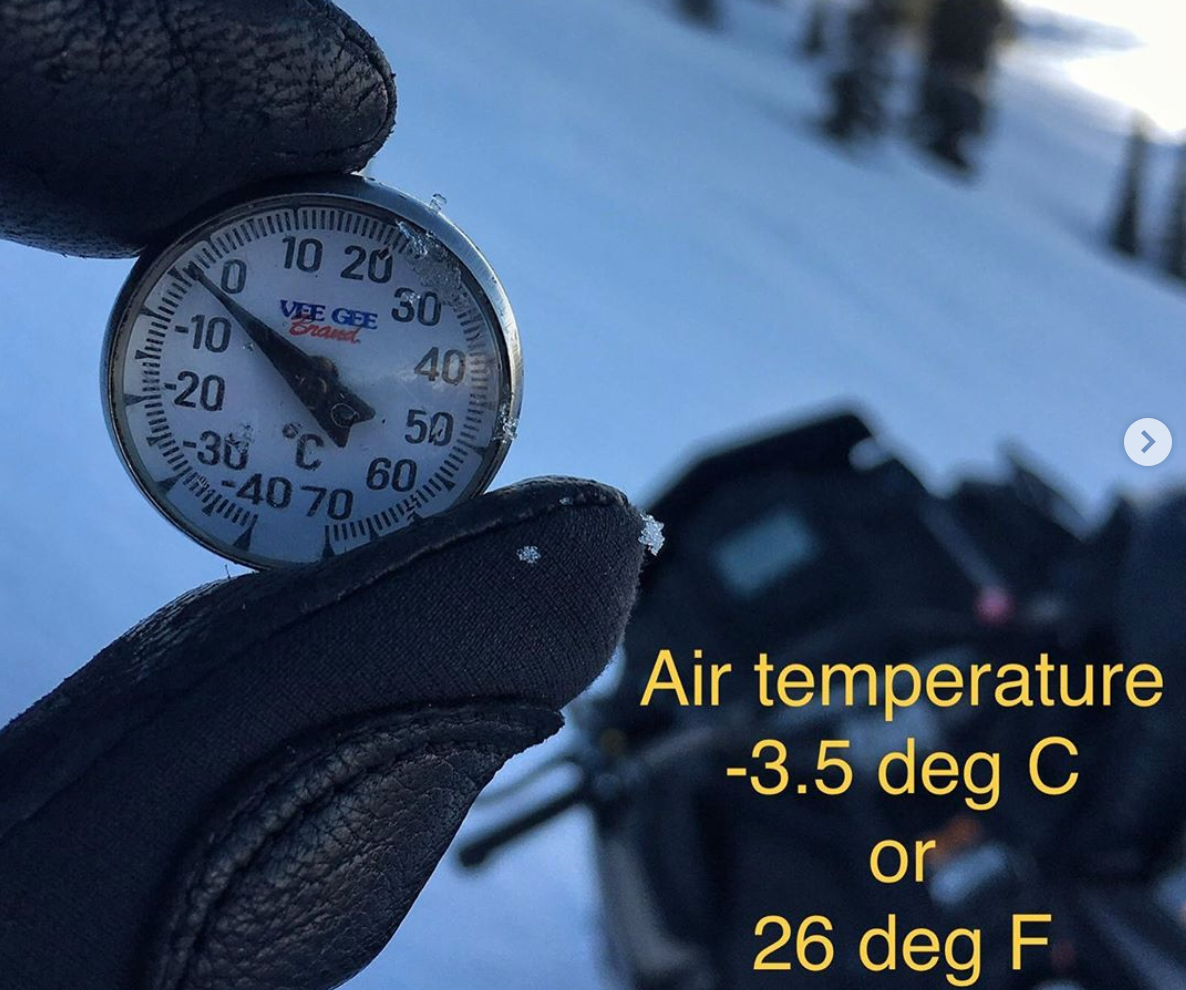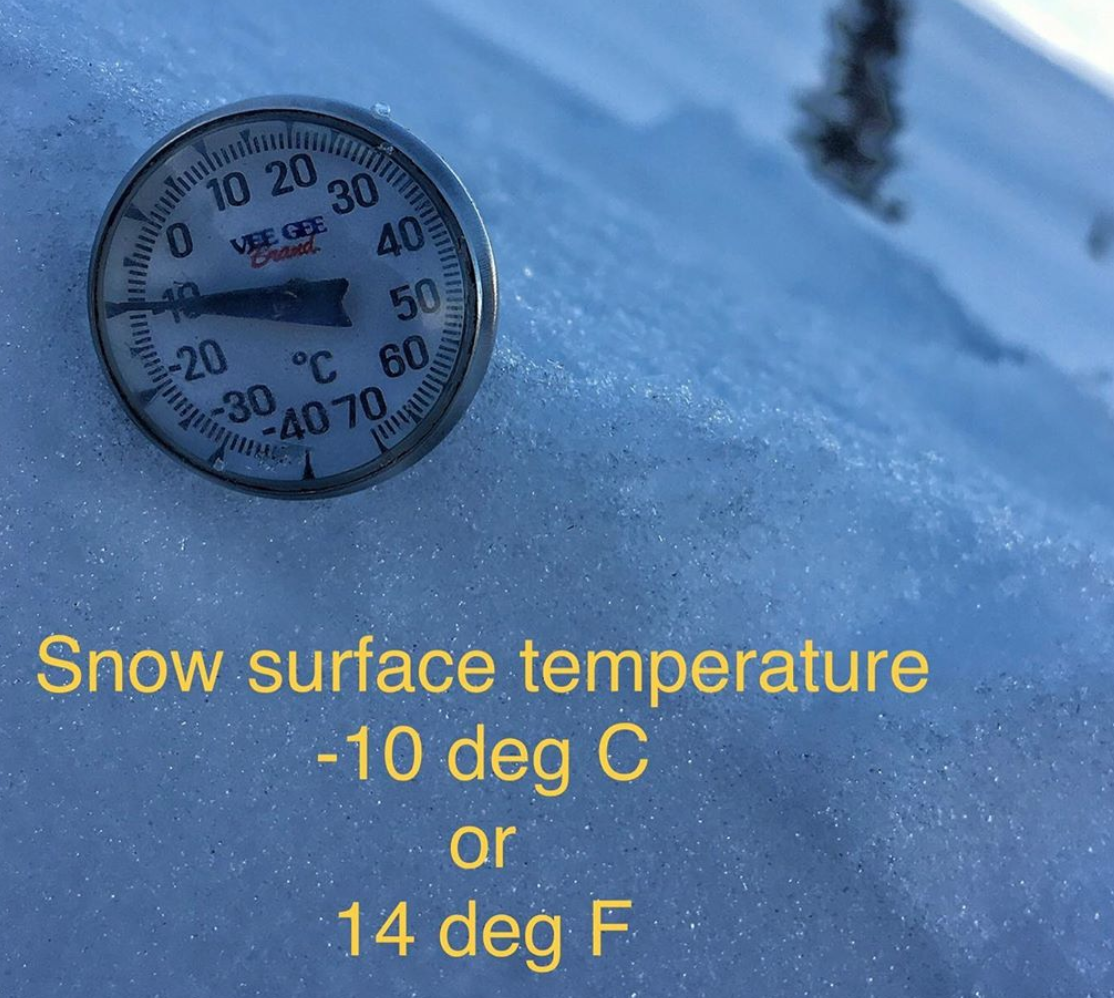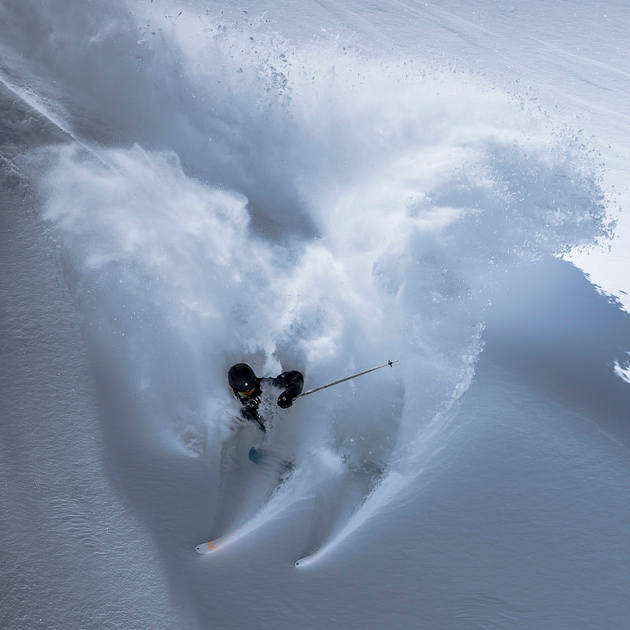
Ever wonder how the snow on high elevation north facing slopes remains dry powder during such warm weather? The Utah Avalanche Center explained the science behind this in an Instagram post yesterday, Feb. 23:
(1) The sun either doesn’t hit the snow it or the sun hits the snow at such a shallow angle that most of the solar radiation is reflected.
(2) Snow is a near perfect “black body” which means it absorbs or emits the maximum amount of heat through infrared radiation. On a cloudy day, this means the snow can warm up a lot. On a clear day (or night) the snow can lose a TON of heat to the sky.
In the photo from today on a north facing slope at 9000 ft, the air temperature was 26 degrees F, BUT the snow surface temperature was 14 degrees F. The snow was staying very cold because it was losing heat to the clear sky.
This property of snow is also an important factor in faceting and weak layer formation.
#utavy — UAC
In a nutshell, this is the process behind Diurnal Recrystalization aka near surface facets. Stay safe out there!

